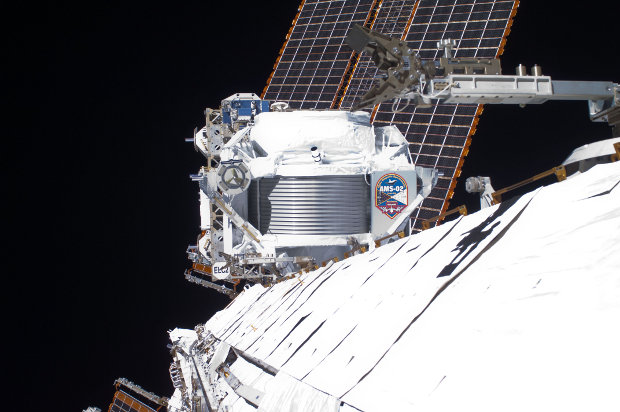
This week the international team that runs the research carried out using the Alpha Magnetic Spectrometer (AMS) announced the first results in the search for dark matter. At a seminar held at CERN, Professor Samuel Ting, a spokesman for AMS and winner of the Nobel Prize for physics in 1976, presented the evidence found, in particular, an excess of positrons in the cosmic ray flux.
AMS has a very complicated history. A simple prototype, called AMS-01, was built in the ’90s by an international consortium led by Professor Samuel Ting and launched into space by the Space Shuttle Discovery in June 1998 during the mission STS-91.
In the following years, Professor Samuel Ting started the development of the final version of AMS, for this reason also called AMS-02. The designing phase was complicated for several reasons, technical, economic and political. AMS is the most sophisticated particle detector ever built and requires such an amount of energy, 2000-2500 watts, that made the construction of a space probe too complex, therefore it was decided to design it as a module of the International Space Station, which can give it the proper power supply.
After the tragedy of the Space Shuttle Columbia, NASA reduced the flights of the space shuttles canceling the one that was supposed to carry AMS to the International Space Station. Alternatives were explored but they were too expensive. Finally, in May 2011, the Space Shuttle Endeavour carried AMS in space, where it could be connected to the Station.
After nearly two years, here are the first results of the analysis of 25 billion events recorded by AMS. Professor Samuel Ting and his collaborators have found an excess of positrons, the equivalent of electrons in antimatter. The 400,000 identified positrons may have been at least partly originated from the collision between dark matter particles.
In the presentation of the results it’s been remarked that it’s not a conclusive discovery and further investigation will be needed to understand if those positrons were actually originated by dark matter. It’s possible that they are produced by pulsars or other sources so at the moment we can’t say that there is evidence, even indirect, of the detection of dark matter.
The good thing is that AMS works very well. In the past, other experiments such as the Italian PAMELA (Payload for Antimatter Matter Exploration and Light-nuclei Astrophysics) and the Fermi gamma-ray space telescope identified antimatter but AMS has a higher precision. The search of the elusive dark matter continues.
[ad name=”AmazonScience”]


Permalink